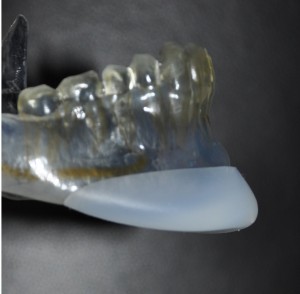Chin augmentation is one of the more popular and historic facial contouring procedures. While often done alone for a ‘short chin’, it is just as commonly done with many other facial procedures such as rhinoplasty and facelifts. Other than rhinoplasty, it is one of the oldest of the facial restructuring procedures having been done in one manner or the other for almost 75 years.
When most think of augmenting the deficient chin, it is almost always perceived dimensionally as a lack of horizontal projection. Profile assessment, done by either lateral cephalometric or picture analysis, makes an assessment of where the most projecting point of the chin falls relative to a vertical line dropped down from forehead, nose or lip structures. Thus chin augmentation is most commonly seen as how many millimeters the chin point is deficient. Knowing what this horizontal chin deficiency is in actual numbers allows the plastic surgeon to choose a chin implant whose sizes is determined by their horizontal thickness. (which are in the range of 3mm to 10mm from most manufacturers)
While a deficient chin most assuredly does have a horizontal deficiency, this assessment alone make be inadequate for some ‘short chin’ patients. Since many short chins are associated with an overall underdeveloped lower jaw, other chin dimensions may be deficient as well. The vertical dimension has historically been overlooked or under evaluated in many chin augmentation patients.
A vertical chin deficiency can exist in isolation but most commonly occurs as part of a horizontal deficiency as well. The chin essentially is rotated backward and up due to the overall jaw shortness. When using traditional implants in this type of aesthetic chin problem, the soft tissue chin point comes forward but still doesn’t look quite ‘right’ as the vertical shortness of the chin is not corrected. (and may even look worse as it is magnified by the horizontal augmentation)
Every chin implant ever manufactured is based on correcting a horizontal chin shortness. The implants are designed to be placed low on the chin bone (pogonion) to provide maximal horizontal correction. While some small amount of vertical height increase of the chin may be obtained (1 to 2mms) by placing the implant very low on the chin bone (on the edge), this is not going to improve the really vertically challenged chin. Not to mention contemporary chin implants are not designed to sit that low and may be positionally unstable and prone to rotation and asymmetry.


Dr. Barry Eppley
Indianapolis, Indiana


